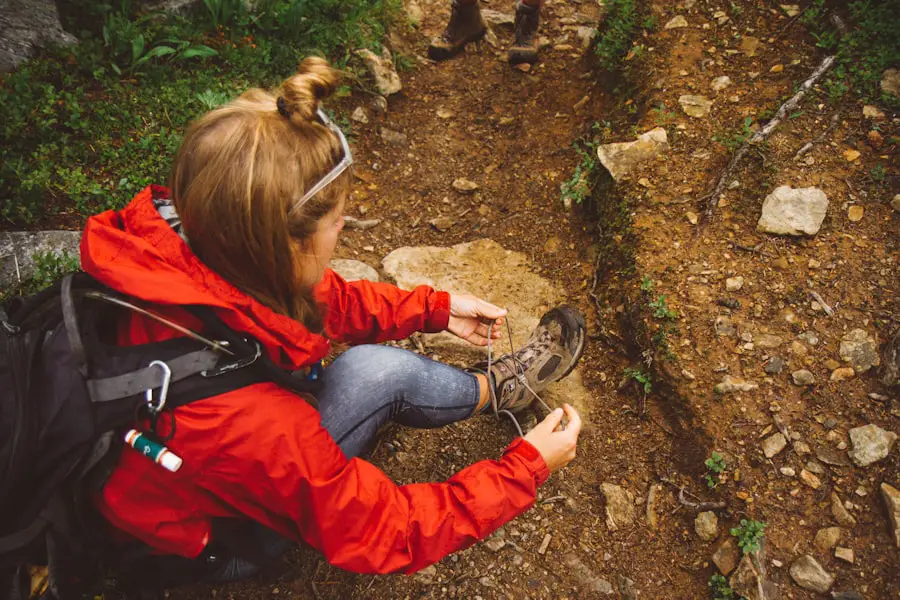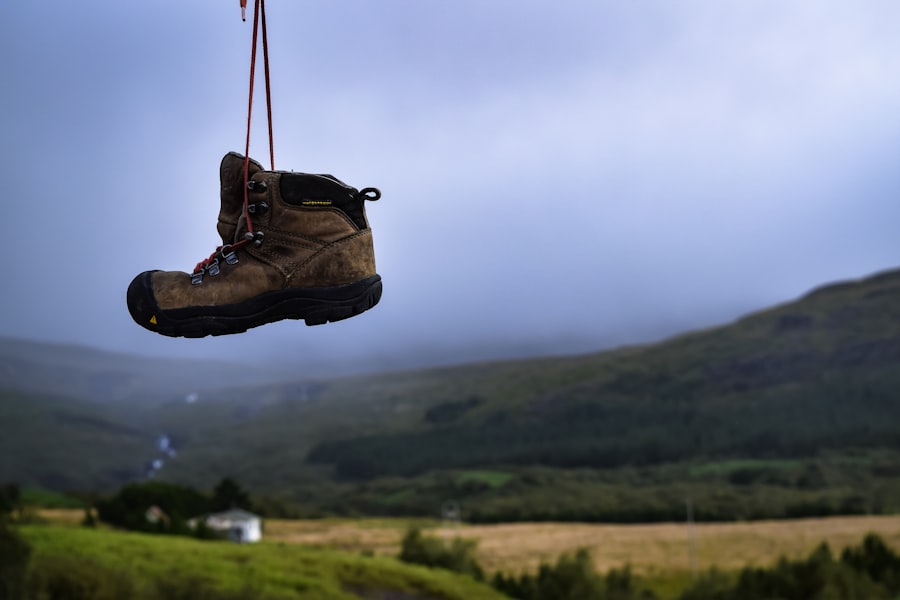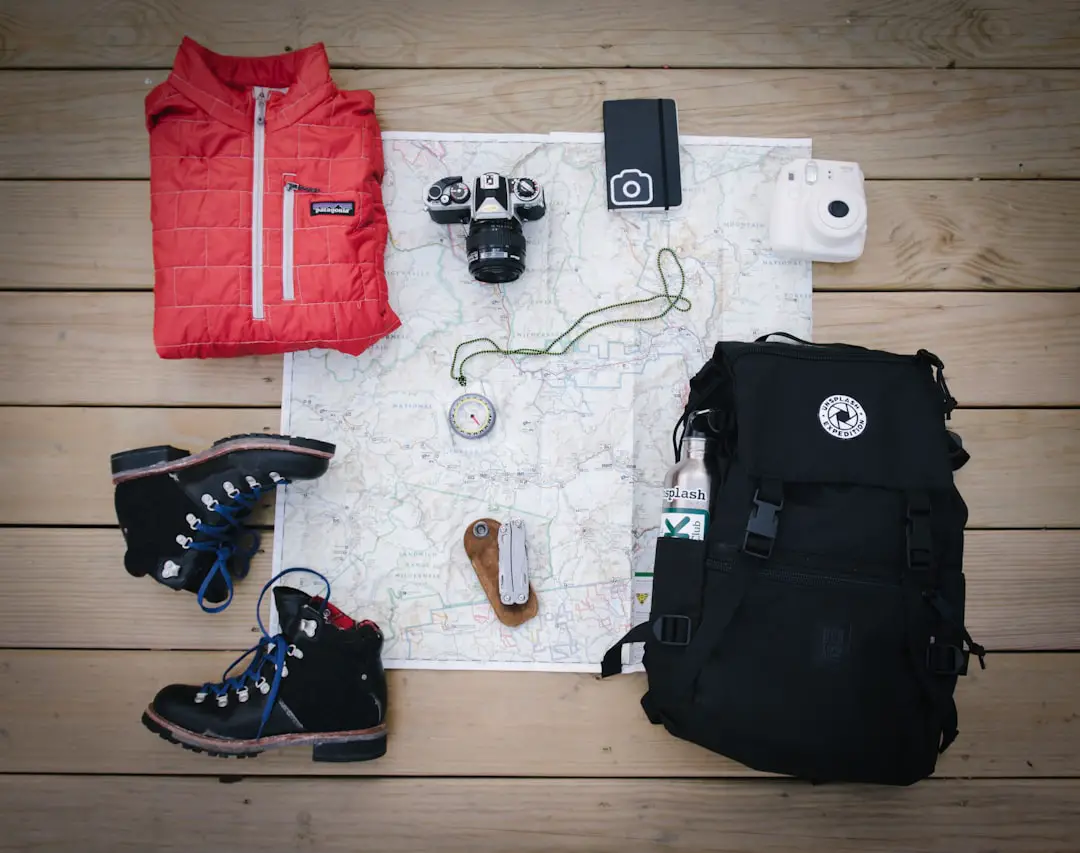Selecting the appropriate hiking shoes is a critical decision for anyone who enjoys outdoor activities. The right footwear can significantly enhance your hiking experience, providing comfort, stability, and protection against the elements. Poorly chosen shoes can lead to blisters, foot fatigue, and even injuries, which can turn an enjoyable trek into a painful ordeal.
The terrain you traverse, the duration of your hike, and the weather conditions all play a role in determining the best footwear for your needs. Therefore, understanding the importance of choosing the right hiking shoes is paramount for both novice and seasoned hikers alike. Moreover, the right hiking shoes can improve your overall performance on the trail.
They can help you maintain balance on uneven surfaces, provide adequate grip on slippery rocks, and cushion your feet against impacts from hard ground. This is especially important when navigating challenging terrains or when carrying a heavy backpack. Investing in quality hiking shoes tailored to your specific hiking style not only enhances your comfort but also boosts your confidence as you tackle various trails.
Ultimately, the right footwear can make the difference between a memorable adventure and a regrettable experience.
Key Takeaways
- Choosing the right hiking shoes is crucial for a comfortable and safe outdoor experience.
- Hiking shoes come in low-cut, mid-cut, and high-cut styles, each offering different levels of ankle support and protection.
- When choosing hiking shoes, consider factors such as fit, support, and traction to ensure they meet your specific needs.
- For day hikes, lightweight and breathable hiking shoes with good traction are ideal.
- For backpacking trips, durable and supportive hiking boots with ankle protection are essential.
Types of Hiking Shoes: Low-Cut, Mid-Cut, and High-Cut
Hiking shoes come in various styles, each designed to cater to different types of hiking activities and preferences. Low-cut shoes are typically lightweight and flexible, making them ideal for day hikes on well-maintained trails. They offer minimal ankle support but allow for greater freedom of movement, which is beneficial for those who prioritize speed and agility.
These shoes are often favored by hikers who prefer a more minimalist approach and are comfortable with their foot placement on stable ground. Mid-cut shoes strike a balance between low-cut and high-cut options. They provide additional ankle support while still maintaining a relatively lightweight design.
This makes them suitable for moderate hikes that may involve uneven terrain or light backpacking. Mid-cut shoes are versatile and can accommodate a range of hiking conditions, making them a popular choice among hikers who want a bit more protection without sacrificing too much weight. High-cut shoes, often referred to as boots, offer maximum ankle support and protection.
They are designed for rugged terrains and longer hikes where stability is crucial. These boots typically feature stiffer soles and more robust materials to withstand harsh conditions. Hikers venturing into rocky landscapes or carrying heavy loads will benefit from the added support that high-cut shoes provide.
However, they can be heavier and less breathable than their lower counterparts, which may be a consideration for those hiking in warmer climates.
Factors to Consider When Choosing Hiking Shoes: Fit, Support, and Traction

When selecting hiking shoes, fit is arguably the most critical factor to consider. A proper fit ensures that your feet are secure without being overly tight, allowing for natural movement while preventing blisters and discomfort. It’s essential to try on shoes with the socks you plan to wear during hikes, as this can affect the overall fit.
Additionally, consider the shape of your foot; some brands cater to wider or narrower feet, so finding a shoe that accommodates your foot shape is vital for comfort. Support is another crucial aspect of hiking shoe selection. The level of arch support varies among different models, and it’s essential to choose a shoe that aligns with your foot’s natural arch.
Those with flat feet may require additional support or custom insoles to prevent fatigue during long hikes. Furthermore, consider the cushioning provided by the shoe; adequate cushioning can absorb shock and reduce strain on your joints, particularly during descents or when walking on hard surfaces. Traction is equally important when navigating various terrains.
The outsole of hiking shoes is designed with specific tread patterns that enhance grip on different surfaces. Shoes with deeper lugs are better suited for muddy or rocky trails, while those with flatter soles may perform well on smoother paths. It’s advisable to assess the type of terrain you’ll be encountering most frequently and select shoes that offer optimal traction for those conditions.
Best Hiking Shoes for Day Hikes
| Brand | Model | Weight | Waterproof | Traction |
|---|---|---|---|---|
| Merrell | Moab 2 Vent | 2 lbs | No | Good |
| Salomon | X Ultra 3 | 1.8 lbs | Yes | Excellent |
| Columbia | Newton Ridge Plus II | 2.2 lbs | Yes | Good |
For day hikes, comfort and lightweight design are paramount. One standout option is the Salomon X Ultra 3 GTX, which combines a breathable mesh upper with a waterproof Gore-Tex lining. This shoe offers excellent traction thanks to its Contagrip outsole, making it ideal for varied terrains.
The cushioned midsole provides ample support for long walks while maintaining flexibility for quick movements. Another excellent choice is the Merrell Moab 2 Ventilator. Known for its comfort right out of the box, this shoe features a durable leather upper and a breathable mesh lining that keeps feet cool during warm weather hikes.
The Vibram outsole ensures reliable grip on both wet and dry surfaces, making it versatile for different trail conditions. Its supportive footbed also helps reduce fatigue over extended distances.
Best Hiking Shoes for Backpacking Trips
Backpacking trips require footwear that can handle heavier loads while providing stability over long distances. The Lowa Renegade GTX Mid is a top contender in this category. With its sturdy construction and Gore-Tex lining, it offers excellent waterproofing while remaining breathable.
The Vibram outsole provides superior traction on rugged trails, making it suitable for various terrains encountered during multi-day hikes. Another noteworthy option is the Vasque Breeze LT GTX. This lightweight boot features a supportive midsole that cushions each step while maintaining stability under load.
Its Gore-Tex lining ensures that feet stay dry in wet conditions, while the aggressive outsole design enhances grip on steep inclines and rocky paths. The combination of comfort and durability makes it an ideal choice for backpackers seeking reliable footwear.
Best Hiking Shoes for Trail Running

Trail running demands footwear that is lightweight yet offers sufficient protection and grip on uneven surfaces. The Hoka One One Speedgoat 4 is highly regarded among trail runners for its plush cushioning and aggressive traction pattern. Its wide toe box allows for natural foot splay during runs, while the breathable upper keeps feet cool on warm days.
Another excellent option is the Altra Lone Peak 5, which features a zero-drop platform that promotes a natural running gait. The shoe’s FootShape toe box allows for ample room in the forefoot, reducing the risk of blisters during long runs. With its durable outsole designed for traction on various terrains, this shoe is perfect for those who enjoy running on trails.
Best Hiking Shoes for Wet and Muddy Conditions
When hiking in wet or muddy conditions, having shoes that can handle moisture while providing traction is essential. The Columbia Drainmaker IV is designed specifically for such environments; its quick-drying mesh upper allows water to escape easily while keeping debris out. The Omni-Grip outsole features specialized lugs that provide excellent traction on slippery surfaces.
Another strong contender is the Merrell Moab 2 Waterproof shoe. This model incorporates a waterproof membrane that keeps feet dry even in puddles or wet grass while maintaining breathability. Its Vibram outsole ensures reliable grip on muddy trails, making it an excellent choice for hikers who frequently encounter wet conditions.
Best Hiking Shoes for Hot and Dry Environments
In hot and dry environments, breathability becomes a key factor in choosing hiking shoes. The Keen Targhee III Waterproof shoe offers a balance of protection and ventilation with its breathable mesh lining and waterproof upper. This shoe provides ample cushioning while ensuring that feet remain cool during long hikes in warm weather.
The Adidas Terrex Swift R2 GTX is another great option for hot climates. Its lightweight design features a Gore-Tex lining that keeps feet dry while allowing moisture to escape. The Continental rubber outsole provides exceptional grip on both wet and dry surfaces, making it versatile enough for various trail conditions encountered in arid environments.
Best Hiking Shoes for Cold and Snowy Conditions
Hiking in cold or snowy conditions requires footwear that offers insulation and waterproofing to keep feet warm and dry. The Salomon Quest 4D GTX forces its way into this category with its advanced insulation technology and Gore-Tex waterproofing. This boot provides excellent ankle support while its Contagrip outsole ensures traction on icy surfaces.
Another excellent choice is the Columbia Bugaboot Plus IV Omni-Heat boot, which features thermal reflective lining to retain heat while keeping moisture at bay. Its rugged outsole provides superior grip on snow-covered trails, making it ideal for winter hikes where stability is crucial.
Best Hiking Shoes for Wide Feet
Finding comfortable hiking shoes can be particularly challenging for individuals with wide feet. The New Balance Fresh Foam Hierro v6 offers a roomy toe box without compromising support or cushioning. Its Fresh Foam midsole provides plush comfort over long distances while maintaining stability on uneven terrain.
Another great option is the Altra Timp 3, which features Altra’s signature FootShape toe box designed specifically for wider feet. This shoe offers ample cushioning and traction suitable for various trail conditions while ensuring comfort throughout extended hikes.
Best Hiking Shoes for Narrow Feet
For those with narrow feet, finding a snug fit can be equally challenging but not impossible. The Salomon X Ultra 3 GTX is an excellent choice due to its precise fit system that accommodates narrower foot shapes without sacrificing comfort or support. Its lightweight design makes it ideal for day hikes while providing adequate traction on various terrains.
The Merrell Moab 2 Waterproof shoe also caters well to narrow-footed hikers with its adjustable lacing system that allows for a customized fit. Its supportive midsole and durable construction make it suitable for both day hikes and longer treks while ensuring that narrow feet remain secure throughout the journey. Choosing the right hiking shoes involves careful consideration of various factors such as fit, support, traction, and specific environmental conditions you may encounter on your adventures.
By understanding these elements and exploring different types of hiking shoes available in the market today, you can ensure that your next hike will be both enjoyable and safe.
When it comes to choosing the right shoes for hiking, it’s important to consider factors such as comfort, durability, and traction. A related article that may be helpful in preparing for your hiking adventures is 5 Must-Have Portable Water Bottles for Your Spring 2025 Adventures. Staying hydrated is crucial while hiking, so having a reliable water bottle is essential. Additionally, having the right gear, such as a portable water bottle, can enhance your overall hiking experience.
FAQs
What are the best shoes for hiking?
The best shoes for hiking are typically hiking boots or hiking shoes that provide good ankle support, traction, and protection for your feet.
What is the difference between hiking boots and hiking shoes?
Hiking boots typically provide more ankle support and are better for rough terrain, while hiking shoes are lighter and more flexible, making them better for less challenging trails.
What features should I look for in hiking shoes?
When choosing hiking shoes, look for features such as waterproofing, good traction, durable construction, and a comfortable fit.
How should hiking shoes fit?
Hiking shoes should fit snugly but not too tight, with enough room in the toe box to wiggle your toes. It’s important to try on hiking shoes with the socks you plan to wear while hiking.
Can I use regular sneakers for hiking?
While regular sneakers may be suitable for light hiking on well-maintained trails, they do not provide the same level of support and protection as hiking shoes or boots. It’s best to use proper hiking footwear for more challenging terrain.
